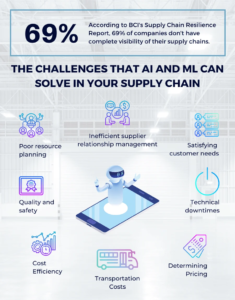
Introduction to Data Warehousing
Data warehousing is a critical aspect of contemporary businesses that allows firms to store and manage voluminous information. This process entails gathering data from different sources and translating them into actionable intelligence. Data warehousing has developed beyond recognition over the years as a result of technological improvement in all areas. Currently, data warehousing is witnessing the power of artificial intelligence (AI) and machine learning (ML).
The Evolution of Data Warehousing

Over the past years, data warehousing has changed. In the start, traditional relational databases were used for storing organized data in a data warehouse. Yet, with more data becoming available to them, businesses were noticing dificulties in maintaining and discerning meaning from their data. This in turn led to the advancement of data warehousing procedures where columnar databases and in-memory processing enhanced storage and queries.
The era of big data led to organizations discovering fresh approaches to dealing with huge and diverse datasets. This resulted in the concept of distributed data warehousing, which includes the storage of data in several servers or clusters. Businesses could also build their data infrastructure to handle very large amounts of data through distributed Data Warehousing Consulting.
The Role of Artificial Intelligence (AI) in Data Warehousing
Data warehousing is being shaped in terms of storage options, computation, and even artificial intelligence. Using AI-powered algorithms to automate different data management tasks like data cleaning, integration, and quality. This means that they can develop algorithms that can detect patterns and outliers in the data, which is essential for businesses to make high-quality decisions.
Data governance and security is also critical to AI. As more and more concerns crop up about data privacy, as well as compliance, AI can be used to identify these risks before they escalate by observing the activity patterns access. In this regard, AI-driven data governance tools can also help to maintain data integrity and enforce the agreed-upon data policies throughout the organization.
The Role of Machine Learning (ML) in Data Warehousing
Machine learning is another game-changer in the field of data warehousing. Through data pattern recognition, ML algorithms gain insights on which to base predictions or recommendations that they can make for an organization. Among these include classification, clustering, as well as regression analysis of data in data warehousing using ML algorithms.
The major advantage of ML in data warehousing includes the capability of processing semi-structured as well as unstructured information. Traditionally, Data Warehousing Consulting relied on structured data, but thanks to social media, sensor data, and other non-traditional content, ML models can derive useful information from this alternative.
8 Ways Machine Learning Transforms Warehousing
Machine learning is revolutionizing data warehousing in several ways:
- Improved Data Quality: To this end, ML algorithms can detect and fix data errors that result in quality diminution and lack of accuracy.
- Enhanced Data Integration: Data integration can be done by ML algorithms that reduce manual effort and increase efficiency.
- Real-time Analytics: ML algorithms perform instant analysis on streaming data enabling businesses to make real-time decisions.
- Predictive Analytics: By use of historical data, ML algorithms can predict future related trends and outcomes, which pave the way for an organization’s proactive responsive strategies towards changes.
- Anomaly Detection: Organizations can use such anomalies to sense fraud or out-of-the-ordinary patterns. These shape indicators are detected by ML algorithms that help in detecting anomalous data.
- Personalized Recommendations: Through the use of ML algorithms, personalized product recommendations can be based on user behavior and preferences thus enhancing customer experience.
- Natural Language Processing: Text data can be analyzed by ML algorithms, which allow companies to derive information from customer reviews, social media posts, and other textual sources.
- Optimized Resource Allocation: ML algorithms help to allocate the resources in a warehouse, save costs, and increase operational efficiency.
Benefits of AI and ML in Data Warehousing

The integration of AI and ML in Data Warehousing Consulting brings numerous benefits to organizations:
- Better data analysis leads to smarter decision-making
- Automating data management tasks to enhance operational efficiency and productivity
- AI-Enabled Risk Control for Data Governance and Security
- Improved consumer experience by using custom recommendations and targeted marketing approach.
- Warehouse Resource Allocation and Inventory Management.
- Real-Time Analytics for Instant Decisioning.
- Automation ensures a reduction in manual effort and human errors.
- Enhanced scalability and big data volume handling
How AI & Machine Learning Will Transform Your Warehouse Management
The implementation of AI and ML in warehouse management will revolutionize the way businesses operate their warehouses. Here are some key areas where AI and ML will make a significant impact:

- Inventory Optimization: Using historical sales data, demand patterns and external factors AI and ML algorithms help optimize inventory to avoid stockouts or overstock.
- Demand Forecasting: Based on the underlying historical data, ML algorithms predict future demand which helps businesses in ordering and producing appropriately.
- Route Optimization: Delivery routes seem to be another area where AI algorithms could help optimize the available options given existing traffic conditions, weather, and customer preferences to reduce transportation costs and improve delivery efficiency.
- Quality Control: In this case, ML algorithms can analyze such information as sensor data, etc., and detect defects or anomalies in the products to address them.
- Labor Management: Use of AI and ML in scheduling labor, task assignment, and performance tracking to optimize workforce productivity & lower labor cost per order.
- Product Placement: AI algorithms can analyze customer behavior and sales data that would lead to better placement of the goods in warehouses for faster deliveries.
- Supply Chain Visibility: The use of AI and ML means real-time visibility in the supply chain, which helps companies to track shipments, identify bottlenecks as well eliminate risks at their infant stage.
- Predictive Maintenance: For instance, ML algorithms may determine the necessity of repair works in advance based on sensor data from warehouse equipment to cut down unit downtime and increase operational effectiveness.
Challenges of Implementing AI and ML in Data Warehousing
While the benefits of AI and ML in data warehousing are immense, there are several challenges that organizations may face during implementation:
1. Data Quality and Integration: Machine learning algorithms are designed to work with high-quality data. However, ensuring data quality and seamlessly compiling data from multiple sources is a cumbersome endeavor.
2. Data Privacy and Security: The use of large amounts of data in AI and ML raises issues about privacy and security. To overcome the challenges, organizations have to introduce comprehensive processes of data governance and protection.
3. Skills and Expertise: However, applying AI and ML to data warehousing is done by specialists. However, to capitalize on the full advantages of AI and ML such as this technology organizations might need to spend for training or recruiting data scientists.
4. Change Management: However, implementing AI and ML can come with significant process modifications. Unsuccessful adoption occurs when organizations do not get the buy-in of the stakeholders and manage the change effectively.
Ethical Considerations: Alternatively, AI and ML algorithms are prone to biases or discriminative results if they are not appropriately programmed and watched. The right ethical considerations and fairness in AI and ML models for organizations.
Read Also: How Generative AI is Revolutionizing Software Development
Future Trends in AI and ML in Data Warehousing
The future of AI and ML in data warehousing looks promising, with several exciting trends emerging:
- Explainable AI: As AI and ML algorithms become increasingly sophisticated, the demand for transparency and interpretability is increasing. Explainable AI seeks to make the AI model decision-making process clear for businesses to trust them, as well as comply with regulatory requirements.
- Automated Data Preparation: Data preparation, namely data cleaning, data transformation, and the like can be automate by AI/ML algorithms. Such a dataset will thus lower the need for manual data preprocessing, shifting more emphasis to model development and analysis on the part of the data scientist.
- Federated Learning: Federated learning avoids the sharing of raw data while training AI models from different decentralized sources. This allows data to be source from many different points, sharing knowledge and insights whilst preserving the privacy and integrity of information.
- Edge Computing: Edge computing is gaining in significance with the popularity of voice-enabled IoT devices and the need for real-time data analysis. Such edge devices enable AI and ML algorithms sorted at their end, for real-time analytics and decision-making.
- Continuous Learning: This process is represent as ML algorithms developing to support continuous learning that makes them adaptive, and thus they become better with the new data. This allows organizations to develop AI models that are more resilient and able to deal with dynamic data patterns.
Conclusion
Data warehousing in the age of AI and Big Data. The benefits of AI and ML in data warehousing are evident, from improved data quality and integration. To enhanced decision-making and operational efficiency. Organizations must also address issues of data quality, privacy, and skills; all are vital to successful implementation. The future of Data Warehousing Consulting looks good with trends such as AI and ML. Getting more sophisticated, the exciting potential for hybrid cloud deployment in private premises on-premises. And “as a service” in public clouds, explainable AI, federated learning, etc. The adoption of AI and ML in data warehousing is unequivocally going to define the business future, where surviving will demand competition with machines.
